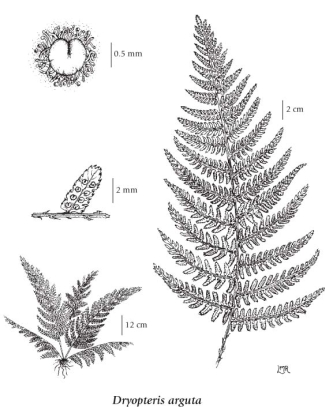Dryopteris arguta (Kaulf.) Watt
coastal wood fern (coastal woodfern)
Dryopteridaceae (Wood Fern family)
Introduction to Vascular Plants
coastal wood fern (coastal woodfern)
Dryopteridaceae (Wood Fern family)
Introduction to Vascular Plants
